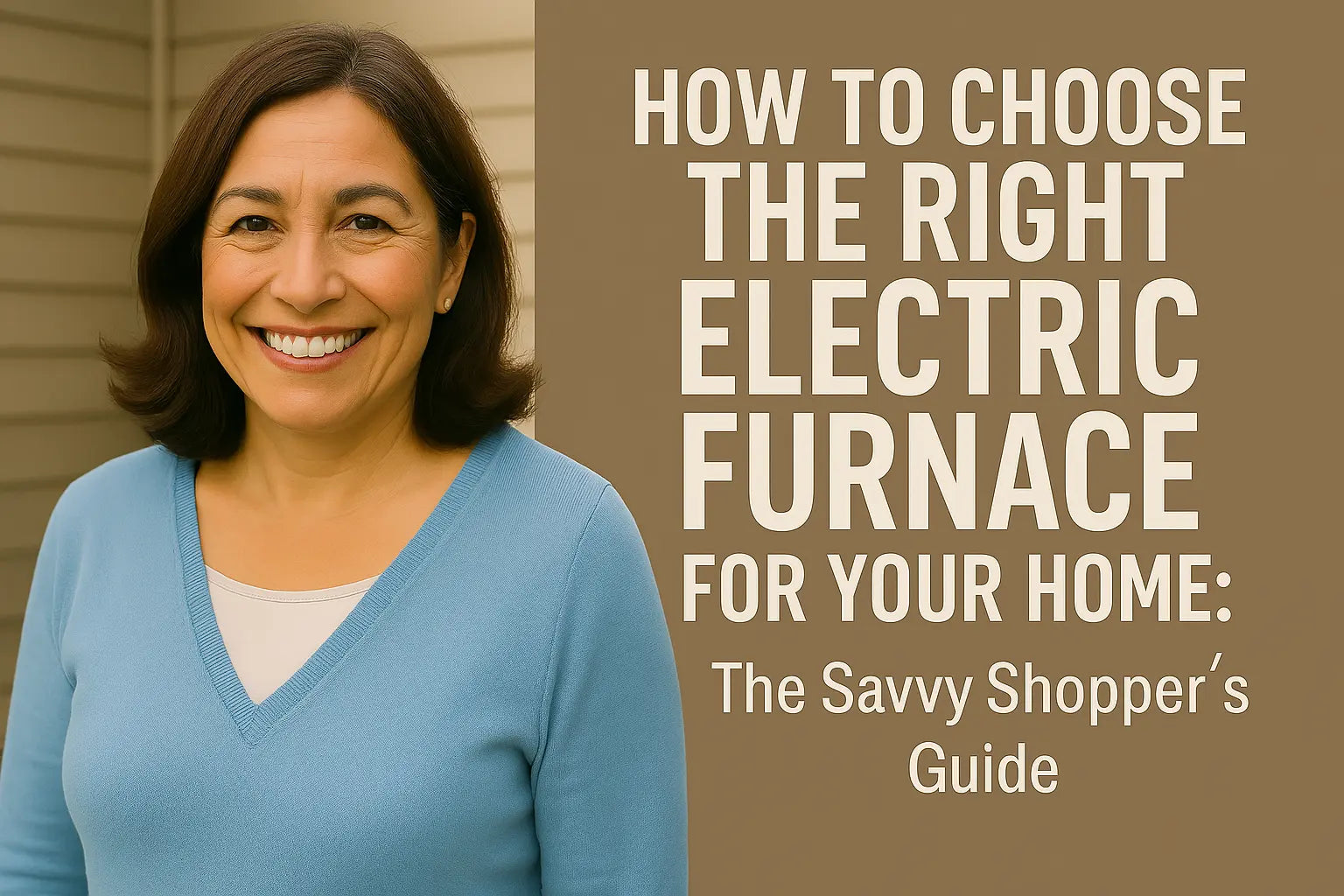Hey there, it’s Samantha! 👋
When I first started looking for a new electric furnace, I felt a little lost in the sea of brands, specs, and jargon. Sound familiar?
I know this stuff can get confusing fast—especially when you want to make sure you’re buying the right system for your home’s size, energy needs, and your wallet.
That’s why I created this no-nonsense guide to help you shop smart. From understanding furnace sizing and energy efficiency to picking the right features, I’m here to make the process straightforward and even a little fun. So, let’s dive in! 💡🏠
Why Getting the Right Furnace Matters
Choosing the wrong furnace size or efficiency level can lead to uncomfortable rooms, wasted energy, and higher bills. On the flip side, the right furnace:
-
Keeps your home warm and comfortable year-round
-
Operates efficiently, saving you money
-
Runs reliably with fewer breakdowns
-
Adds value to your home
Step 1: Understand Your Home’s Heating Needs (Sizing Your Furnace) 📏
The first step is making sure your furnace can handle the square footage and heat loss of your home.
Electric furnaces are rated by their heating capacity in BTUs (British Thermal Units) or kilowatts (kW). Choosing a furnace that’s too small means it can’t keep up; too large means it cycles on and off too often (called short cycling), wasting energy.
How to Size Your Furnace
A common rule of thumb is about 30–60 BTUs per square foot, but that’s very rough. The best method is a Manual J load calculation—a detailed assessment that considers:
-
Home size and layout
-
Insulation quality
-
Window types and exposure
-
Local climate
-
Air infiltration rates
Many HVAC pros provide this service, but you can also get a ballpark estimate using free online calculators like this one from Energy.gov.
Step 2: Check the Furnace’s Efficiency Ratings 🔍
Electric furnaces are nearly 100% efficient at converting electricity to heat, but there’s still room to save by looking at:
-
AFUE (Annual Fuel Utilization Efficiency): For electric furnaces, this is often near 100%, but confirm the specs.
-
Energy Star Certification: Some electric furnaces meet or exceed Energy Star standards, indicating tested energy-saving performance.
-
Variable-Speed Motors: Furnaces with variable-speed blowers can adjust airflow more precisely, improving comfort and efficiency.
Visit ENERGY STAR’s heating and cooling products page for a list of certified electric furnaces.
Step 3: Consider Features That Make a Difference 🌟
Beyond size and efficiency, look for features that improve comfort and convenience:
-
Variable-speed blower motors: Quieter and better airflow control.
-
Smart thermostat compatibility: For remote control and energy savings.
-
Multi-stage heating: Provides more precise temperature control.
-
Compact or slim designs: Ideal for homes with limited space.
-
Durable heating elements: Look for warranties and construction quality.
Step 4: Factor in Installation and Maintenance Costs 🛠️
Buying a furnace is only part of the picture. Proper installation is critical for performance and safety. Installation costs can vary widely, so get multiple quotes and ask about:
-
Electrical upgrades needed (breaker size, wiring)
-
Ductwork modifications or sealing
-
Thermostat installation
-
Maintenance plans or warranties
The HomeAdvisor furnace installation cost guide can help you estimate what to expect.
Step 5: Shop Trusted Brands and Dealers 🏷️
Quality matters when it comes to heating your home. Stick to reputable brands known for reliability and good warranties.
Here are some brands to consider (all available at The Furnace Outlet):
-
Goodman — Affordable and reliable.
-
Amana — Known for durability and good warranties.
-
Payne — Solid value for basic electric furnaces.
Read customer reviews and check manufacturer warranties before you buy.
Bonus: Don’t Forget Rebates and Incentives 💰
Electric furnaces with Energy Star certification might qualify for utility rebates or tax incentives. These can significantly reduce your upfront cost.
Check the Database of State Incentives for Renewables & Efficiency (DSIRE) to see if you qualify for local rebates or programs.
Samantha’s Final Tips for a Smooth Purchase 🛍️
-
Always get multiple quotes from licensed HVAC contractors.
-
Don’t skip the Manual J sizing—it’s worth the cost.
-
Ask about financing or payment plans if upfront cost is a concern.
-
Plan for regular maintenance to keep your furnace running efficiently.
Wrapping It Up with Warmth and Confidence 🔥
Buying a new electric furnace is a big decision, but with a little knowledge and the right help, you can make an informed choice that keeps your home cozy and your bills manageable.
Remember to check out The Furnace Outlet’s collection for reliable, efficient models that fit your needs and budget.
Want more maintenance tips for your electric furnace? Visit my guide: Keep It Cozy.
Stay savvy and stay warm,
Samantha, Home Comfort Advisor 🧡







